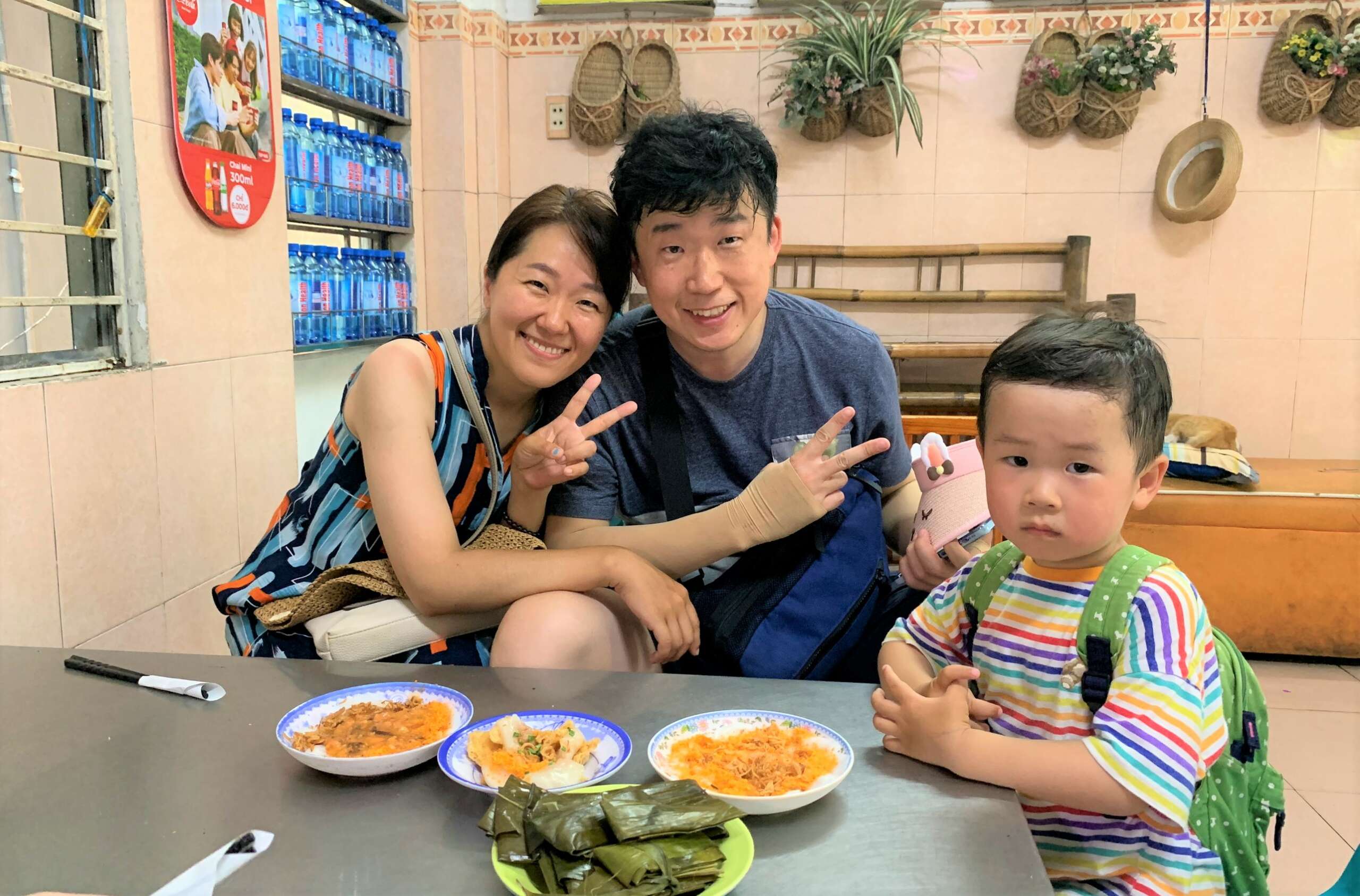Introduction: Exploring the Culinary Delights of Da Nang, a Coastal Paradise
Nestled along the South China Sea, Da Nang captivates visitors with its pristine beaches, lush landscapes, and a culinary scene that reflects its rich history and cultural influences. From traditional Vietnamese dishes infused with global flavors to the freshest seafood delicacies, Da Nang’s cuisine is a symphony of flavors that tantalizes the taste buds. In this comprehensive guide, we delve into the unique cooking techniques and culinary traditions that define Da Nang’s gastronomy.

Culinary Traditions of Da Nang: A Blend of History, Culture, and Flavors
Da Nang’s Geographical Influences on Culinary Heritage
- Da Nang’s coastal location has bestowed upon it an abundance of fresh seafood, a cornerstone of its culinary identity.
- The city’s proximity to the mountains provides access to an array of herbs, spices, and vegetables, contributing to the vibrant flavors of Da Nang dishes.
- The region’s history as a trading port has facilitated the exchange of culinary ideas and techniques from various cultures, enriching Da Nang’s cuisine.
Cultural Influences Shaping Da Nang’s Gastronomy
- Vietnamese culinary traditions form the foundation of Da Nang’s cuisine, with dishes like Pho and Cao Lau showcasing its authentic flavors.
- Chinese influences are evident in the use of soy sauce, rice noodles, and stir-frying techniques in many Da Nang dishes.
- French colonial influences have left their mark on Da Nang’s cuisine, with the introduction of baguettes, pâté, and coffee.
Fresh Ingredients: The Heart of Da Nang Cuisine
- Da Nang’s cuisine celebrates the use of fresh, locally sourced ingredients, ensuring the utmost flavor and quality in every dish.
- Seafood is a staple ingredient, with fish, shrimp, squid, and crab featuring prominently in many dishes.
- Herbs and spices, such as basil, lemongrass, chili, and mint, add layers of flavor and aroma to Da Nang dishes.
Unique Cooking Techniques Unveiled: Crafting Flavorful Delicacies
Steaming: Bringing Out the Natural Goodness of Ingredients
- Steaming is a gentle cooking technique that preserves the delicate flavors and textures of ingredients.
- Fish, vegetables, and rice are commonly steamed in Da Nang cuisine, resulting in light and flavorful dishes.
- Steamed dishes retain their nutrients, making them a healthy option.
Stir-Frying: A Symphony of Flavors and Colors
- Stir-frying is a rapid cooking technique that infuses ingredients with intense flavors.
- Woks are used to toss ingredients over high heat, creating a medley of textures and colors.
- Stir-fried dishes are often served with rice or noodles.
Grilling: Embracing the Smoky Delights
- Grilling imparts a smoky, charred flavor to meats, seafood, and vegetables.
- Da Nang’s street food scene is renowned for its grilled delicacies, such as grilled squid, fish, and chicken.
- Grilled dishes are often served with dipping sauces, adding an extra layer of flavor.
Frying: A Crispy Delight
- Frying is a versatile cooking technique that creates crispy textures and golden-brown exteriors.
- Deep-fried spring rolls, known as “nem ran,” are a popular snack in Da Nang.
- Fried rice and noodles are also common dishes, showcasing the versatility of this technique.
Pickling and Preserving: Capturing Flavors Through Time
- Pickling and preserving techniques extend the shelf life of ingredients and add unique flavors to dishes.
- Fermented fish sauce, known as “nuoc mam,” is a staple condiment in Da Nang cuisine, adding a salty, umami flavor to dishes.
- Pickled vegetables are often used as a garnish or condiment, adding a tangy and refreshing touch.
Unique Seasonings and Sauces: The Essence of Da Nang’s Cuisine
- Da Nang’s cuisine is known for its bold and distinctive flavors, achieved through a variety of seasonings and sauces.
- Fish sauce, soy sauce, shrimp paste, and chili sauce are commonly used in Da Nang cooking, adding a harmonious balance of flavors.
- Herbs and spices, such as basil, lemongrass, chili, and mint, are also essential in creating the unique flavors of Da Nang dishes.
7 Regional Specialties: A Culinary Journey Through Da Nang
Mi Quang: A Noodle Symphony of Flavors
- Mi Quang is Da Nang’s signature dish, a rice noodle soup characterized by its rich broth, flavorful toppings, and vibrant colors.
- The broth is made from pork bones, shrimp, and spices, resulting in a complex and deeply satisfying flavor.
- Toppings include pork, chicken, shrimp, quail eggs, and fresh herbs, creating a medley of textures and flavors.
Cao Lau: A Noodle Dish Steeped in History
- Cao Lau is another iconic dish from Da Nang, featuring rice noodles, pork, and crispy wonton crackers.
- The dish is known for its unique texture, with the rice noodles having a slightly chewy consistency.
- Cao Lau is often served with a dipping sauce made from fish sauce, sugar, and chili, adding a spicy and tangy kick to the dish.
Banh Beo: Steamed Rice Cakes with a Delicate Touch
- Banh Beo is a delightful steamed rice cake dish characterized by its delicate texture and savory toppings.
- The rice cakes are made from a batter of rice flour, tapioca starch, and water, resulting in a soft and smooth consistency.
- Toppings include shrimp, pork, and peanuts, adding a burst of flavors to each bite.
Banh Mi: A Culinary Fusion of East and West
- Banh Mi is a Vietnamese sandwich that has gained worldwide popularity, with Da Nang offering its own unique variations.
- The classic Banh Mi features a baguette filled with pork, pâté, pickled vegetables, and a variety of sauces.
- Da Nang’s Banh Mi is known for its generous fillings and the use of fresh, locally sourced ingredients.
5 Com Tam: A Harmonious Balance of Flavors
- Com Tam is a broken rice dish that showcases the versatility of Vietnamese cuisine.
- It consists of steamed broken rice served with grilled pork, fried egg, pickled vegetables, and a sweet and savory fish sauce dressing.
- The combination of textures and flavors in Com Tam makes it a satisfying and well-rounded meal.
6 Unique Dining Experiences: Immersing in Da Nang’s Culinary Charm
Street Food Delights: A Culinary Adventure on Every Corner
- Da Nang’s street food scene is a vibrant tapestry of flavors and aromas, offering an authentic taste of the city’s culinary heritage.
- From grilled meats and seafood to fresh spring rolls and Banh Xeo pancakes, Da Nang’s street food stalls offer a diverse range of affordable and delicious options.
Discover Hidden Gems: Off-the-Beaten-Path Restaurants
- Beyond the bustling streets, Da Nang is home to hidden gems waiting to be discovered by adventurous foodies.
- Small, family-run restaurants often offer unique dishes and traditional recipes passed down through generations.
- Exploring these hidden culinary treasures provides a deeper understanding of Da Nang’s culinary heritage.
Cooking Classes: Unveiling the Secrets of Da Nang Cuisine
- For those passionate about cooking and eager to learn the secrets behind Da Nang’s flavorful dishes, cooking classes offer an immersive experience.
- Participants can learn how to prepare classic Da Nang dishes under the guidance of expert chefs.
- Cooking classes provide a hands-on opportunity to master the techniques and flavors of Da Nang cuisine.
FAQs: Unraveling Common Questions about Da Nang Cuisine
Question 1: What are some of the most popular seafood dishes in Da Nang?
Answer: Da Nang is renowned for its seafood delicacies, with dishes such as grilled squid, steamed prawns, and fish hotpots being must-tries.
Question 2: Can vegetarians find delicious options in Da Nang’s cuisine?
Answer: Da Nang offers a variety of vegetarian-friendly dishes, including steamed vegetables, tofu stir-fries, and Banh Xeo pancakes filled with vegetables.
Question 3: What are the best ways to experience Da Nang’s street food scene?
Answer: To fully immerse in Da Nang’s street food culture, explore the city’s night markets, where vendors gather to offer a diverse range of local delicacies.
Question 4: Are there any cooking classes available for those interested in learning Da Nang cuisine?
Answer: Da Nang offers several cooking classes led by experienced chefs, providing hands-on experience in preparing and understanding the unique flavors of the city’s dishes.
Question 5: What is the best way to find hidden culinary gems in Da Nang?
Answer: Ask locals for recommendations, explore small alleys and side streets, and keep an eye out for family-run restaurants that have been operating for generations.
Conclusion: A Culinary Symphony Worth Savoring
Da Nang’s cuisine is a rich tapestry of flavors, techniques, and traditions that reflects its history, culture, and geographical location. From the fresh seafood delicacies to the bold and aromatic flavors of its dishes, Da Nang offers a culinary adventure that captivates the senses. Whether exploring the bustling street food scene, indulging in fine dining experiences, or learning the secrets of Da Nang cooking through hands-on classes, visitors are guaranteed a culinary journey that leaves lasting memories.
Key Takeaways:
- Da Nang’s cuisine is a blend of Vietnamese, Chinese, and French culinary influences.
- Fresh ingredients, bold flavors, and unique cooking techniques define Da Nang’s cuisine.
- Da Nang’s signature dishes include Mi Quang, Cao Lau, Banh Beo, Banh Mi, and Com Tam.
- Street food, hidden culinary gems, and cooking classes offer immersive experiences for food enthusiasts.
- Da Nang’s cuisine showcases the city’s rich history, cultural heritage, and geographical diversity through its distinctive flavors and dishes.


Leave a reply